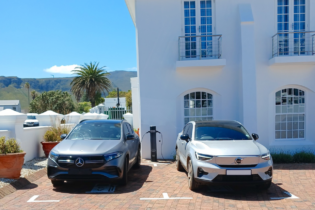The Durban-Free State-Gauteng Corridor has been highlighted by government as one of its five massive infrastructural projects planned to boost the economy. Not surprising, considering it is one of the busiest routes in the country ferrying approximately 30 million tonnes of road freight per annum.
During his budget speech at the beginning of 2012, the then minister of transport Sibusiso Ndebele said the revitalisation of this transport corridor forms part of government’s 2050 vision and is the backbone of South Africa’s freight transportation network, vital in facilitating economic growth for the country and the Southern African region. Its major objective, according to Ndebele, is to deal with infrastructure and operational planning, an investment as well as demand forecasting over a 50-year horizon. Research by the government into the total feasibility of the revitalisation of the Durban-Free State-Gauteng Corridor estimates the Port Developmental precinct to cost R100 billion, with an estimated half a trillion rand projected for the entire corridor. The project developmental components are: The Port of Durban; Durban-Gauteng road corridor; Durban-Gauteng rail corridor (including high-speed rail); logistics hubs and terminals within the corridor, as well as supportive local area land-use plans. It is envisioned once these elements are in place and operational, it will reduce the cost of doing business, ensuring the country’s economy remains competitive in global markets. It is estimated that freight carried by roads will grow by between 200 and 250% over the next 20 years. Transnet is of the opinion too much freight travels by road instead of rail and that needs to be reversed. Hence, the parastatal is earmarking R200 billion (two thirds of its CAPEX budget) on ensuring the rail corridor between Durban and Johannesburg is able to accommodate the movement of freight by rail while able to accommodate additional cargo to both the Johannesburg dry port and City Deep areas. Mboniso Sigonyela, spokesperson for Transnet says: “This corridor is the busiest freight corridor in the country and the focus of the programme is on improving efficiency and effectiveness of freight operations along the corridor, ensuring that capacity is provided ahead of demand. It is our intention to achieve these objectives in a manner that optimises socio-economic development along the corridor.” Corridor revitalisation Other aspects of the proposed revitalisation programme include: creating a dry port at Cato Ridge where container and bulk cargo can be railed from the port to reduce road traffic congestion in both the port and CBD. Work has been done at the port to open an additional road exit but the long-term solution is establishing this dry port, which would be situated on the outskirts of the metro and is adjacent to the N3 and Cato Ridge shunting yards for trans-shipment. There is also the plan for the new Durban dug-out port on the old airport site and a planned freight hub at Harrismith. The port is also investing in additional container handling equipment to improve the efficiency of the container terminal and is converting old bulk berths that are no longer efficiently utilised to handle additional container traffic. This follows in the wake of the harbour having been widened so larger vessels can dock with ease. Sigonyela states: “There are a number of levers that we have. Firstly, infrastructure development will create additional capacity, which will reduce congestion and thus improve reliability. Secondly, we are developing performance metrics for the corridor, which will tell us how the corridor is performing overall. Thirdly, we are building structures and forums for the various infrastructure providers, regulatory agencies and policy departments and other sector stakeholders to collaborate and ensure an integrated approach to developments on the corridor.” André Pottas, corporate finance advisory leader at Deloitte in Durban says: “It is no surprise that the government is starting to place an emphasis on the revitalisation of this transport corridor. It is long overdue and it is a long-term project that is going to take years to complete. The timing is crucial especially if you look at the potential threat or competition that the Durban port is going to face over the next 20 years. It is thus vital for Durban that the port and the logistics link to Gauteng are as efficient as possible.” The N4 has opened the Johannesburg to Maputo road link and it is envisaged the rail upgrades along this route will follow. The Trans Kalahari rail link through Botswana to Walvis Bay is back on the agenda and could remove the need for Europe and US bound shipping to round the Cape. A lot of commodities are currently brought down to Durban from Zambia and the Democratic Republic of the Congo by road, and the port developments in Tanzania and Northern Mozambique will offer cost-effective alternatives over time. Pottas adds: “The shift from road to rail will reduce the cost of doing business and carbon emissions and provide significant productivity and operational efficiency improvements. Also, the Trade Port is set to be Southern Africa’s premier logistics platform, given that the Port of Durban provides connectivity to 53 international destinations and access to local distribution networks. This project is intended to connect the major economic centres of Gauteng and Durban/Pinetown and, at the same time, connect these centres with improved export capacity through our sea ports.”Harrismith hub
According to the Free State MEC for Economic Development, Tourism and Environmental Affairs, Mamiki Qabathe, the province is ready to use its strategic position to boost its profile in the logistics sector. The Free State government is investing in the concept of corridor development and believes the Durban-Free State-Gauteng Corridor is intended to promote not only better transport of goods between the end points but will also boost economic development in the towns and rural areas along the way. Harrismith, situated at the intersection of the N3 and N5 highways is ideally positioned to be turned into a logistical hub. This is especially pertinent considering the road between Johannesburg and Durban is the busiest long-haul freight transport corridor in the country and the Harrismith Highway Junction is the Southern Hemisphere’s biggest truck stop. It is intended to create an inland port at Harrismith that can handle cargo containers and at the same time be able to shift cargo from road to rail. It is envisaged this will both reduce road congestion and costs. It is also estimated that the volume of cargo passing through Harrismith will increase by 25% per annum over the next seven years and, ultimately, the provincial government would like to see the Harrismith Logistical Hub comprising multimodal capabilities: air, road and rail. Freight handling Dr Jan Havenga, director: Centre for Supply Chain Management, Department of Logistics at Stellenbosch University says: “If you look at the amount of freight moving on road and rail on the Durban-Gauteng Corridor annually it equates to approximately 56 million tonnes of freight, of which 85% is moved on road. About 45% of all tonnes on this corridor is for imports and exports and is therefore an important corridor for international trade by sea. “We estimate that more than five million tonnes of freight can be easily targeted for modal shift to rail. Saving the country approximately R350 million on the freight bill and reducing the amount of trucks on this route by 400. The target can be increased in the medium term by a further 18 million tonnes, which would save another R1.2 billion and take a further 1 400 trucks off this route.” He adds that the greatest impediment to modal shift, historically, is a lack of investment in rail and the drag on rail costs caused by the maintenance of low density lines. “These issues are receiving attention and a turnaround in rail performance is already noticeable. Transnet has embarked on a progressive investment programme and investment in new rolling stock, motive power and line upgrades is showing results. Rail’s short-term plans are, however, to concentrate on bulk mining products and fixing the coal supply chain. Many successes in this regard have been noticed. The next phase should see the development of intermodal solutions for palletised cargo, which should see significant inroads on the Natal and Cape corridors alleviating congestion markedly and decreasing the investment pressure on roads. The intermodal solution will require logistics hubs close to Durban and Gauteng and the formation of these hubs around railheads will be an important feature over the next two decades.” The Durban Chamber of Commerce and Industry CEO, Andrew Layman, states: “One has to see this as a long-term project built up with many phases. It will include more efficiency and a great deal more capacity in terms of rail freight. In essence, the N3 is under undue pressure, largely because it has to accommodate cars and trucks. The ultimate vision would be for a dedicated truck road route from the port to Gauteng via the Free State. Sigonyela says: “We have a two-pronged approach: first we aim to reduce road congestion by moving a lot more cargo into and out of the port by rail; and second we will improve the road network to enable more efficient and predictable road operations. “This is an ongoing programme and not a once-off initiative. Traffic volumes are forecast to grow and logistics operations models continue to evolve, which means that the infrastructure and nature of services provided must similarly evolve. Hence, a key focus is to create structures for collaboration and integrated planning on an ongoing basis. “Increasing rail market share is a key component of the programme. Rail has been growing market share on this corridor and our objective is to accelerate this trend.”






